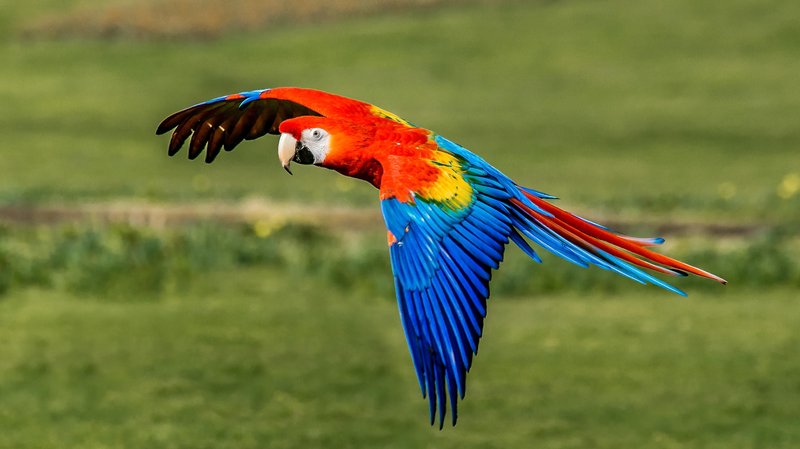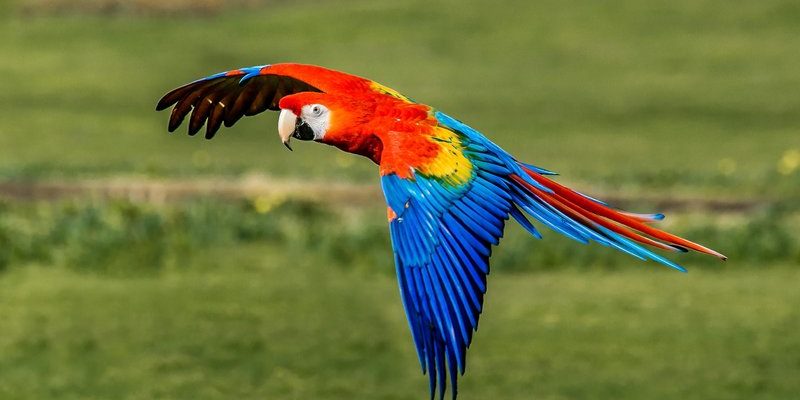
Let’s dive into the story of the scarlet macaw, exploring its evolution, habitat, and the important role it plays in our ecosystems. Grab a cup of coffee, and let’s chat about this amazing bird and how it has adapted over time to survive and thrive in its natural surroundings.
Origins of the Scarlet Macaw
The scarlet macaw, scientifically known as *Ara macao*, has a rich ancestry that dates back millions of years. These birds are part of the parrot family, which is believed to have originated in South America. They are particularly well-suited to humid tropical climates, which is why they predominantly live in rainforests. Imagine a time when dinosaurs roamed the earth; it’s in this ancient landscape that our feathered friends began to flourish.
As the climate changed during the Cenozoic Era, scarlet macaws adapted to various environments. Their bright colors not only help in attracting mates but also play a vital role in camouflage among the vibrant foliage. Interestingly, their evolutionary journey has equipped them with strong beaks that can crack open tough nuts and seeds, making them highly adaptable feeders. This adaptability is a key reason why they have survived through the ages.
Physical Characteristics of the Scarlet Macaw
Scarlet macaws are impossible to miss, thanks to their striking appearance. With an impressive wingspan of about 3 feet, these birds boast feathers primarily in vibrant red, accented with blue and yellow. Picture a flying rainbow—a stunning sight that’s hard to forget!
Their beaks are another notable feature. These beaks are curved and powerful, designed to crack open hard-shelled nuts and break into fruits. Talk about nature’s perfect tool! Their zygodactyl feet—two toes facing forward and two facing backward—give them a strong grip on branches, allowing them to navigate their habitat with ease. Honestly, if you saw one up close, you’d understand why they are sometimes called “living jewels.”
Scarlet Macaws in Their Natural Habitat
Scarlet macaws primarily inhabit the rainforests of Central and South America, spanning countries like Brazil, Peru, and Costa Rica. These lush environments are a treasure trove of biodiversity, providing plenty of food sources and nesting sites. You might be wondering how they fit into this vibrant ecosystem. Well, these birds are important seed dispersers. As they feast on fruits and nuts, they help spread seeds throughout the forest, promoting new plant growth.
However, the rainforests are facing serious threats, including deforestation and habitat loss. This has led to declining numbers of scarlet macaws in some areas. Conservation efforts are crucial for their survival. By protecting their habitats, we not only safeguard the scarlet macaw but also the countless other species that depend on these ecosystems.
The Behavior and Social Life of Scarlet Macaws
Scarlet macaws are known for their strong social bonds. They often form monogamous pairs, meaning they mate for life—how sweet is that? These birds are highly intelligent and have a playful nature. They engage in social grooming, which strengthens their relationships, and you might catch them playing with each other or simply hanging out.
Their vocalizations are another interesting aspect of their social behavior. Scarlet macaws are quite chatty, using a variety of calls to communicate with one another. These calls can carry over long distances, making it easier for them to stay in touch when flying through thick foliage. Imagine a group of friends shouting to each other across a bustling city; that’s kind of what it’s like for these birds in their vibrant habitat!
The Role of Scarlet Macaws in Indigenous Cultures
Throughout history, scarlet macaws have held a significant place in various indigenous cultures in Central and South America. Many tribes see them as symbols of beauty, freedom, and even wisdom. In some communities, their feathers are used in traditional clothing and ceremonial regalia. It’s fascinating to think about how a simple bird can weave its way into the cultural fabric of a society.
Additionally, the presence of scarlet macaws in folklore often portrays them as beings of great power. For example, in some myths, they are viewed as messengers between the physical and spiritual worlds. This connection to spirituality emphasizes how humans have admired and revered these magnificent creatures for centuries.
Conservation Efforts for Scarlet Macaws
Unfortunately, the population of scarlet macaws is declining due to several factors, including habitat destruction, illegal trapping, and trade. Conservationists are stepping up to protect these vibrant birds and their habitats. Efforts include creating protected areas, implementing breeding programs, and raising awareness about the threats they face.
You might be curious about how you can help. Supporting wildlife organizations that focus on the conservation of scarlet macaws and their habitats is a great start. Additionally, spreading the word about the importance of protecting these incredible birds can make a big difference. Every action counts!
The Future of the Scarlet Macaw
Looking ahead, the future of the scarlet macaw depends on our actions today. While they are facing challenges, there is hope when people come together to protect these extraordinary birds and their environments. Conservation programs are gaining momentum, and more individuals are becoming aware of their plight.
Here’s the thing: if we can create a world where scarlet macaws can thrive, we’ll not only preserve a beautiful species but also maintain the delicate balance of our ecosystems. Just think about how lovely it would be to walk through a rainforest and see these stunning birds soaring above. It’s a goal worth striving for.
In conclusion, the scarlet macaw is more than just a pretty face; it’s a symbol of resilience and adaptability. By understanding its history and evolution, we can appreciate how important these birds are to our world and the need to protect them. So next time you see a scarlet macaw, either in the wild or in a conservation setting, remember the incredible journey it has taken to get there, and let’s work together to ensure its future remains bright.

